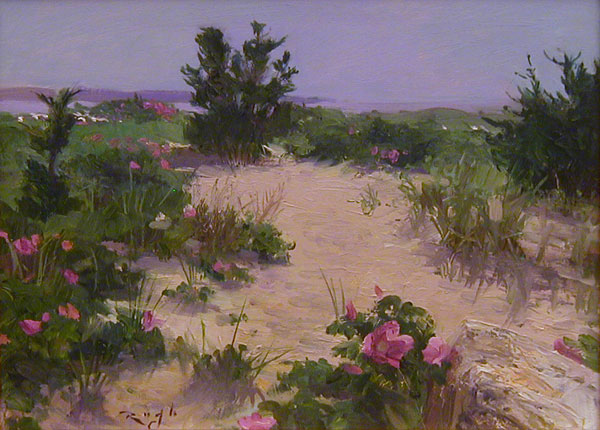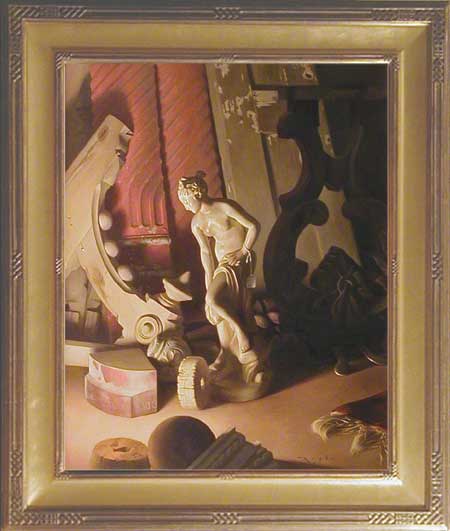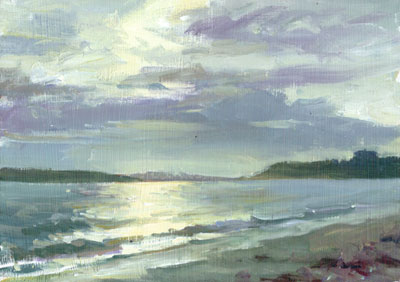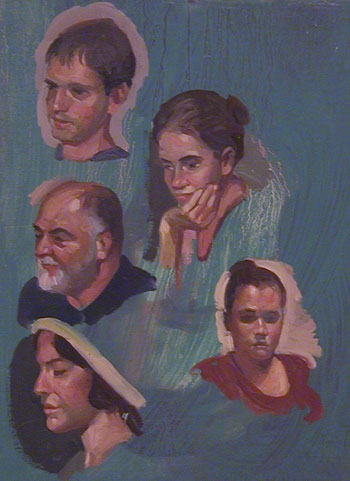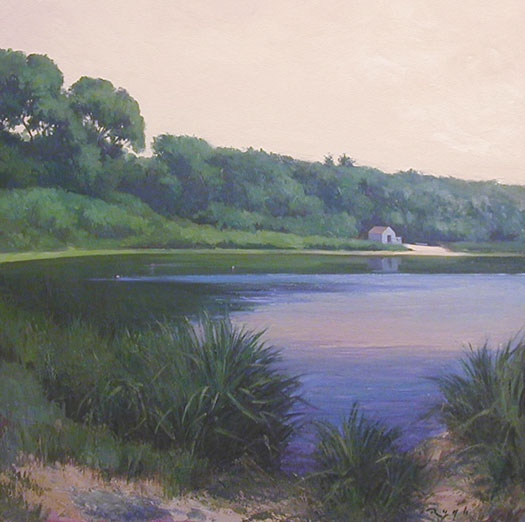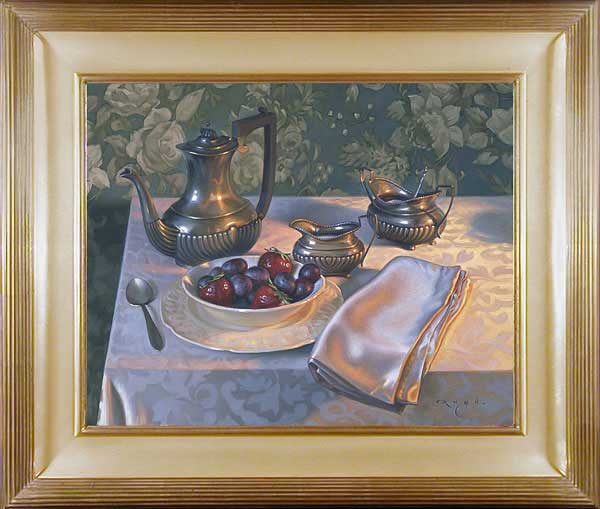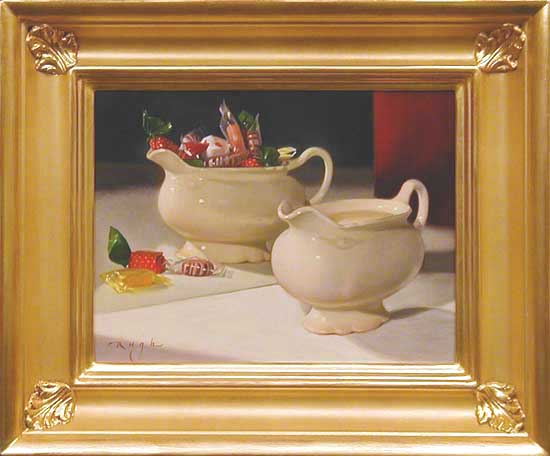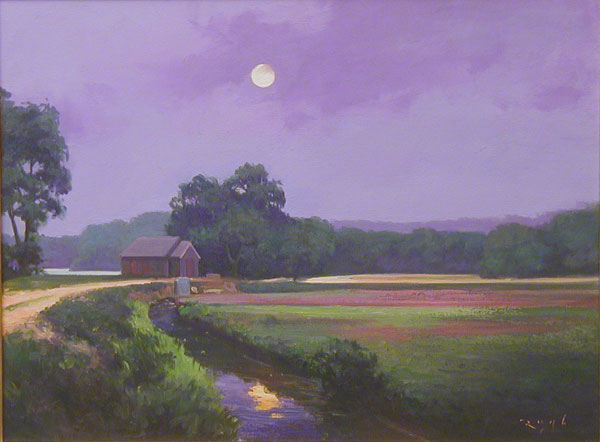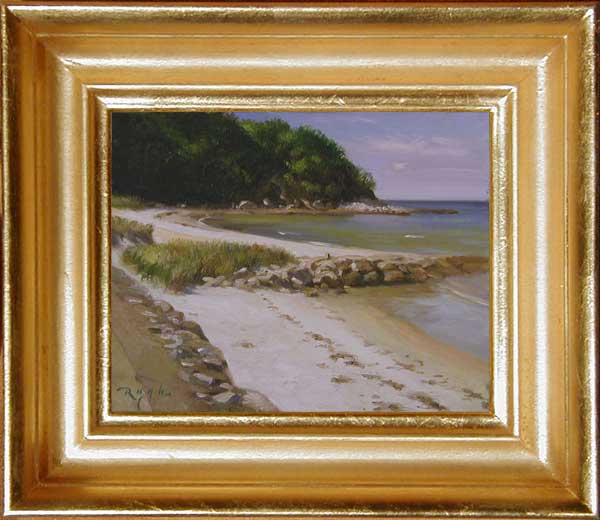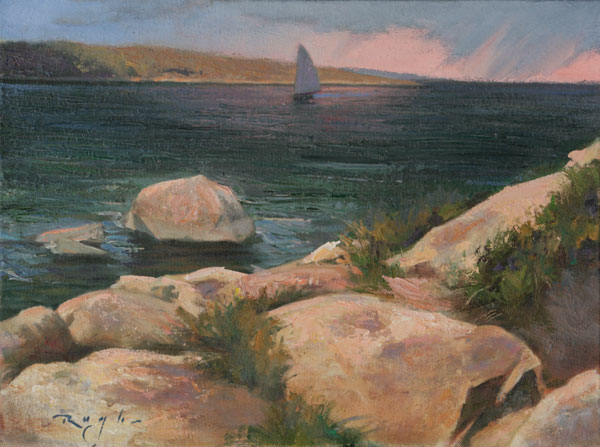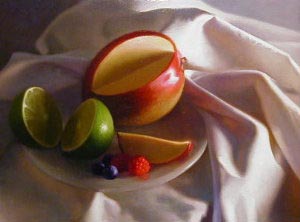 View a larger image.
View a larger image.I suppose few make the attempt to master color mixing because it seems complicated (aren't there millions of colors?) The subject has come up because someone asked about the colors I would choose for a limited palette. Since I'm on a self-imposed exile from the technical aspect of painting and because I've come to the conclusion that the only way to have a command of color-mixing is to discover it for yourself, I've tried to boil down everything I know about the science in the following principals (at the risk of appearing evasive):
Black and white are blue (I know this is a secret because I've never found it elsewhere.)
Add two and change three
The triad is the key
Light beats dirt
The dull cannot become pure again
A fluted column lacks unnecessary material (this is the response to the limited palette question of which there are many shapes)
The core shares axes
Complexity competes with purity
The vision is changed by the viewer
Switch domains and become contrary
Start with one and the rest follow
All according to the rules of proximity
And bound by the laws of gravity
I'd like to give a small framed oil sketch to the first person who can decipher these clues. Email me privately for confirmation.-
Doug Rugh
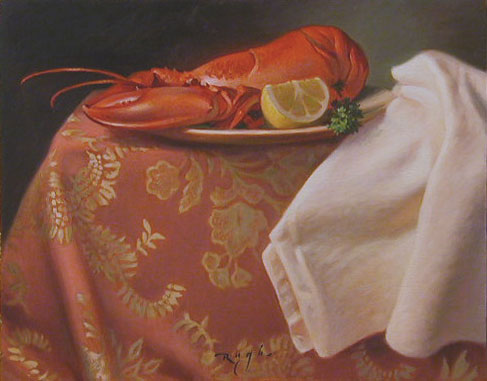 View a larger image. Sold at the Cape Museum of Fine Arts Gala Auction.
View a larger image. Sold at the Cape Museum of Fine Arts Gala Auction.